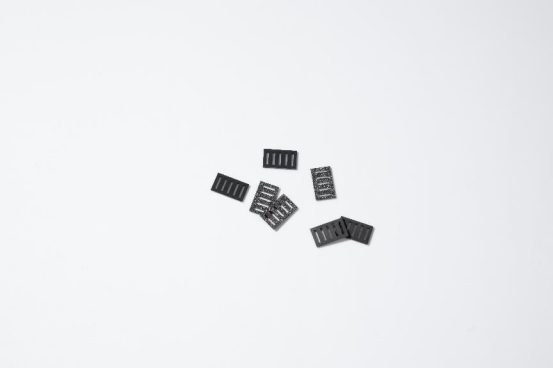Company tel:+86-379-63184520
Contact number:+86-15937921751
Postcode:471000
Email:info@yuxindiamond.com
Address:3-1-508 Luoyang National University Science Park, No. 2 Penglai Road, Jianxi District, Luoyang, China 471000
Boron-doped Diamond Electrode Introduction
With the rapid development of the modern economy and society, the amount of sewage discharged by various industries is increasing day by day, and the composition of pollutants is becoming more and more complex, which has caused great damage to human health and ecological environment. how to deal with these Sewage has become a huge challenge faced by all mankind. At present, commonly used sewage treatment methods include physical, chemical and biochemical methods. However, traditional treatment methods are often unable to effectively degrade sewage when faced with complex pollutant components, high pollutant concentrations, and biologically toxic sewage. At the same time, traditional sewage treatment methods also face problems such as long treatment cycle, large investment in equipment, and the introduction of other pollutants.
Electrochemical advanced oxidation processes (EAOP), as a new type of sewage treatment process, has the advantages of simple equipment, easy operation, convenient control, The advantages of wide application range and no need to add chemical reagents are regarded as a sewage treatment process with great application potential. The core of the electrochemical advanced oxidation process lies in the anode material. Commonly used anode materials include graphite electrodes, Metal electrodes (Cu, Pb, etc.), metal oxide electrodes (MnO2, RuO2, NiO, etc.), and boron doped diamond (BDD) electrodes. Among them, the BDD electrode has the characteristics of wide electrochemical potential window, small background current, low dielectric constant, good reversibility, and high hole mobility. It has broad application prospects in sewage treatment and has become a research hotspot in recent years.
BDD is a diamond material in which some of the carbon atoms in diamond are replaced by boron atoms. Because the intrinsic resistance of diamond can reach 1016 Ω∙cm, it is an insulating material with excellent performance. When boron atoms are doped into diamond,diamond transforms from an insulator to a semiconductor. This is because boron atoms enter the diamond lattice to generate hole carriers, making it a hole-type semiconductor or a P-type semiconductor. With the increase of boron doping concentration, diamond The hole concentration in the stone increases accordingly, the carrier concentration increases, and the conductivity improves. However, when the concentration of boron atoms in diamond is too high, the structure of diamond will be destroyed, resulting in a significant reduction in the conductivity of diamond. Under the condition of electrification, the surface of BDD will directly or indirectly oxidize the organic matter in the water into non-toxic and harmless inorganic matter.
Preparation method of boron-doped diamond electrode
High temperature high pressure (HPHT)
It is a commonly used synthetic method of synthetic diamond. When using high temperature high pressure method to prepare BDD, diamond particles usually need to be in the environment of metal-solvent precipitation leads to the prepared diamond often existing in the form of a fine powder, which needs to be further sintered before it can be used as an electrode material. Therefore, there are relatively few reports on the preparation of BDD electrodes by the high temperature and high pressure method.
Chemical Vapor Deposition
The performance of the BDD film prepared by chemical vapor deposition method is stable, and the doping concentration of boron atoms can be controlled. At the same time, the BDD film prepared by chemical vapor deposition technology can be directly used as a membrane electrode. Common chemical vapor deposition methods include hot filament chemical vapor deposition technology (HFCVD) and microwave plasma chemical vapor deposition (microwave plasma chemical vapor deposition, MPCVD). HFCVD has the advantages of convenient operation and simple equipment and is suitable for the preparation of large size BDD membrane electrodes. MPCVD uses microwave energy to excite gaseous raw materials into plasma, thereby depositing them on the substrate material to form a BDD film. The BDD film prepared by MPCVD has high purity and excellent performance. But the high price of MPCVD equipment leads to the relatively high cost of BDD membrane electrodes prepared by it.
Summary and Outlook
As a new type of sewage treatment electrode, BDD electrode has an extensive application prospect. However, the practical application of BDD electrodes needs to be based on the preparation of BDD electrodes with low cost, good stability, etc.
Industry analysts said that in recent years, due to the outbreak of the new crown epidemic, residents have paid more attention to public health safety and drinking water health, and the demand for medical wastewater treatment and household water purification has increased accordingly. Boron-doped diamond electrodes are a new type of electrode with great potential Materials, in this context, the market will also usher in a good opportunity for development. Luoyang Yuxin Diamond will explore more potential applications of diamond together with you.

Source: Li Lianlian, Chen Guanqin: "Preparation methods of boron-doped diamond electrode and its research progresses" published in "Diamond & Abrasives Engineering" DOI 10.13394/j.cnki.jgszz.2021.5005
, Internet, etc.
If there is any infringement, please contact to delete.







